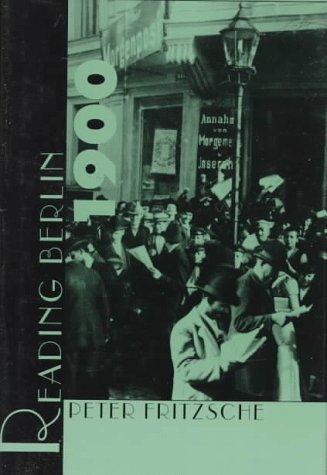The great cities of the turn of the 20th century were built stone by stone, but were experienced story by story. The built city was mediated by words - newspapers, advertisements, signs, and schedules - by which the inhabitants lived, dreamed, imagined their surroundings. In this study of the text of urban modernism - the newspaper page - Peter Fritzsche analyzes how reading and writing dramatized Imperial Berlin. Berlin in 1900 attracted writers, artists and filmmakers whose fascination with the city manufactured an elaborate urban culture that insinuated itself into the most casual metropolitan encounters. The newspapers' daily versions fabricated Berlin into a sensational place, transforming city dwellers into flaneurs, browsers, and spectators. Paying more attention to the kaleidoscope of urban life than to singular world events, the print media reconstituted the metropolis into an extraordinary field of visual pleasure. At the same time, thanks to the extravagant and dramatic operations of the media, Berlin began to look more like the sensational front pages.
Almost all Berliners were readers, and each day they took inventory of boulevards and alleyways, princes and prostitutes, the latest fashions and vanished landmarks. Berlin's print culture enchanted the metropolis and thereby anticipated a modernist sensibility that celebrated the urban experience of discontinuity, instability and transience. Fritzsche carefully explores this coming modernity, disentangling its myth from the modern experience itself and yielding an urban enclave at odds with its intended imperial destiny. It's a story with cameo appearances by Georg Simmel, Walter Benjamin and Alfred Doblin.
- ISBN10 0674748816
- ISBN13 9780674748811
- Publish Date 1 April 1996
- Publish Status Out of Print
- Out of Print 7 June 2010
- Publish Country US
- Imprint Harvard University Press
- Format Hardcover
- Pages 320
- Language English
